The new year marks the start of a slow progression towards intertidal fieldtrips as the low tide period starts to get lower and shifts from evening low tides to morning low tides. It is a great feeling to be back on the shore again, after about 1.5 months break due to the unfavourable low tides since mid November last year.
The first intertidal fieldtrip of 2014 begins at Chek Jawa. With heavy rain pouring almost daily throughout November to December and the eastern part of peninsular Malaysia being hit by floods, we were worried if Chek Jawa will be affected by large amount of freshwater flowing down the Johor river. Chek Jawa is located on the eastern end of Pulau Ubin where discharge from the nearby Johor River is directed at.
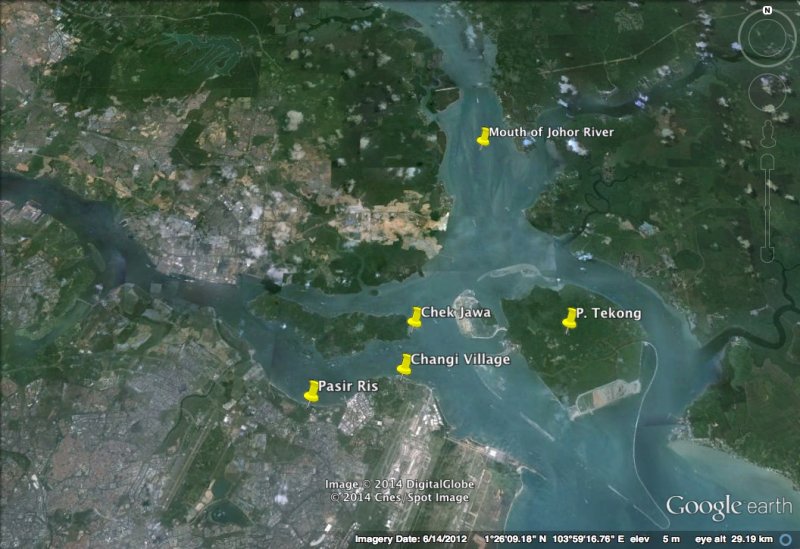 |
| Location of Johor River mouth. |
In Jan 2007, a mass death of marine animals took place at Chek Jawa. Animals such as sea cucumber, sea stars, carpet anemones, peacock anemones died in large numbers. It was a devastating sight for many who visited Chek Jawa during this period. Read about the first account of the mass death and the cause.
1. "
Mass Death at Chek Jawa", 18 Jan 07 on the ubin volunteers blog
2. "
What caused the mass death?"
The GOOD news is that Chek Jawa looks fine from today's trip. I did not notice any signs of unusual deaths but rather, Chay Hoon, Mei Lin and I witnessed the birth of a baby cuttlefish! We were just checking the inside of an egg case when the little fellow decided to emerge from its case. It was a moment of great excitement.
 |
| Photos by Mei Lin. |
There were many
peacock anemones (or tube anemones) and they come in different colours, even bright neon ones like green or orange. Peacock anemones are not true anemones.
 |
| Peacock anemone of neon green. |
 |
| Another peacock anemone with banded tentacles. |
This is my first time noticing this purple
haddon's carpet anemone (
Stichodactyla haddoni) after having visited Chek Jawa many times. There were a few of such colour seen.
 |
| Purple carpet anemone. |
Another great find is this
pimply mangrove anemone. According to Ria Tan (wildsingapore), this anemone has yet to be identified by Prof Daphne Fautin, world authority on sea anemones.
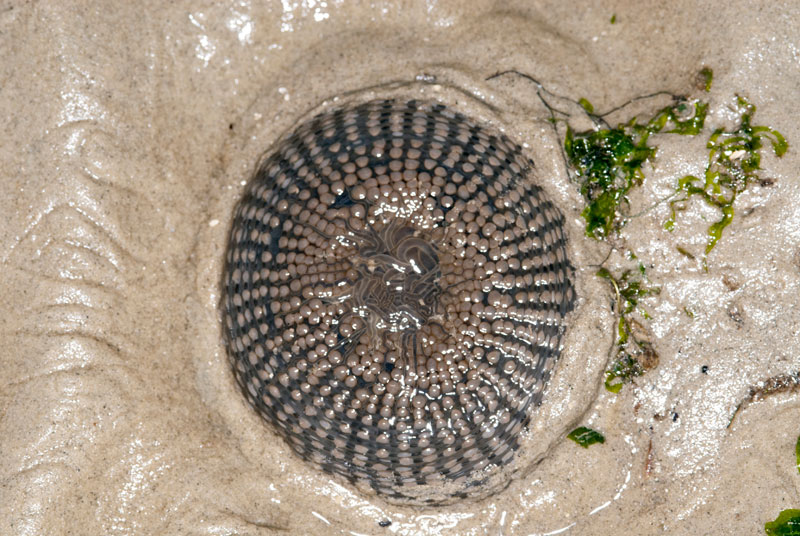 |
| Pimply mangrove anemone. |
Chek Jawa one location where sea stars comes in various sizes. On this trip, I decided to skip all the large ones. I came across the
plain sand star (
Astropecten sp.),
biscuit sea star (
Goniodiscaster scaber) and
cake sea star (
Anthenea aspera) while the rest also encountered a juvenile
knobbly sea star (
Protoreaster nodosus) and the
scaly sea star (
Nepanthia sp.).
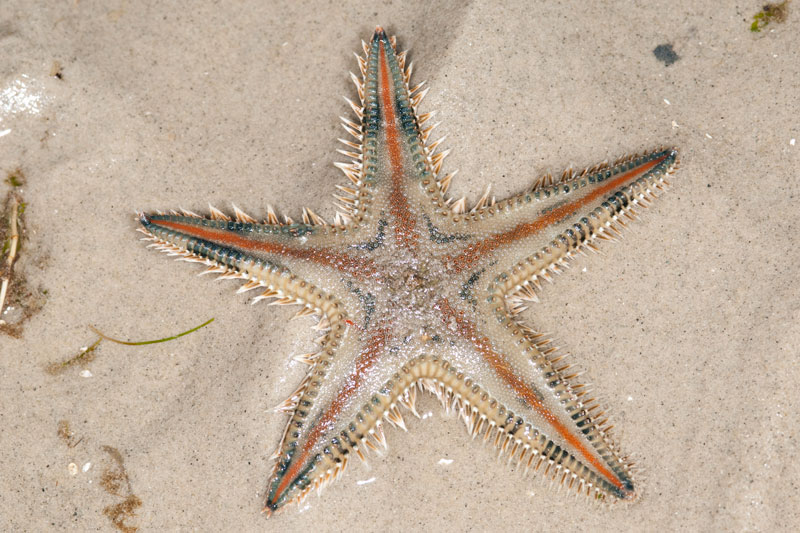 |
| Plain sand star |
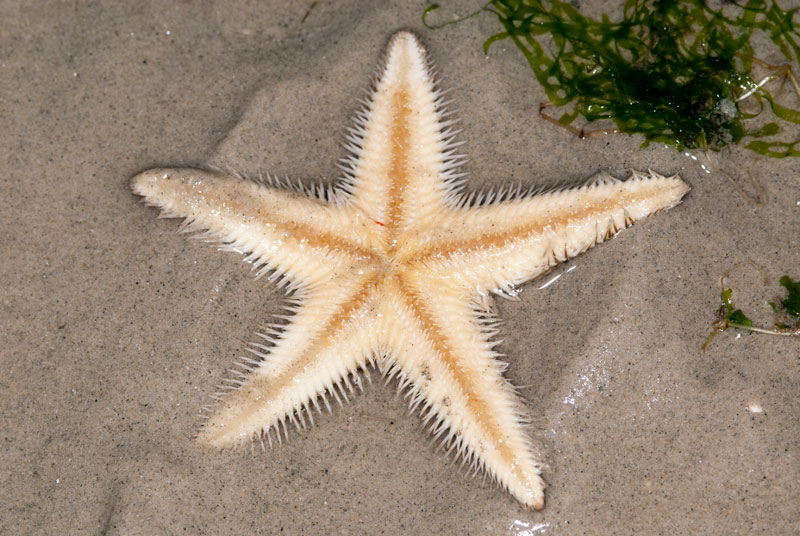 |
| Plain sand star (underside) |
 |
| Very tiny cake sea star |
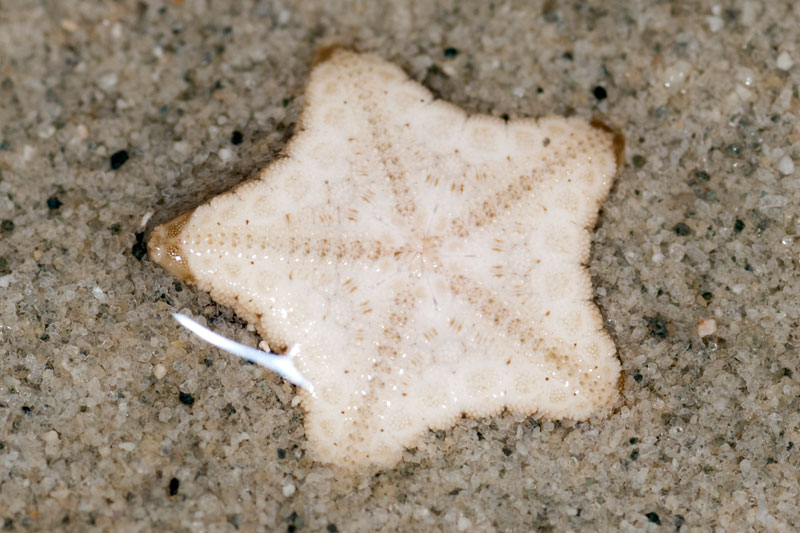 |
| Very tiny cake sea star (underside) |
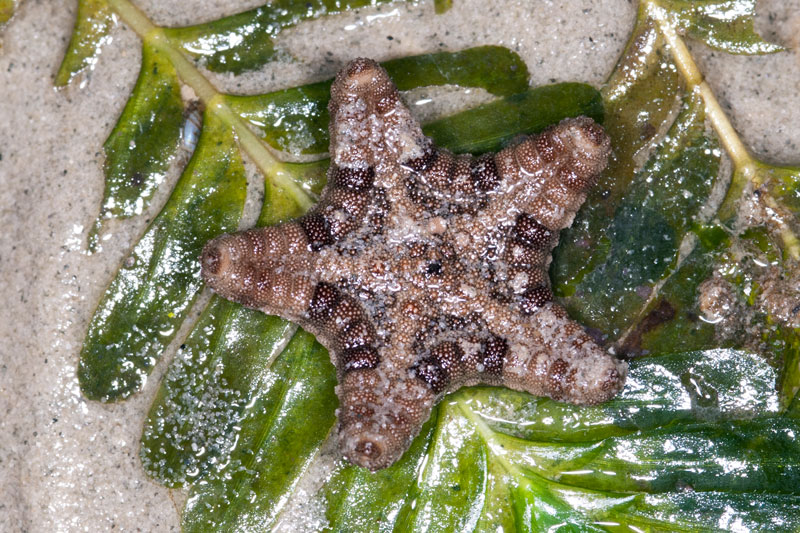 |
| Tiny biscuit sea star |
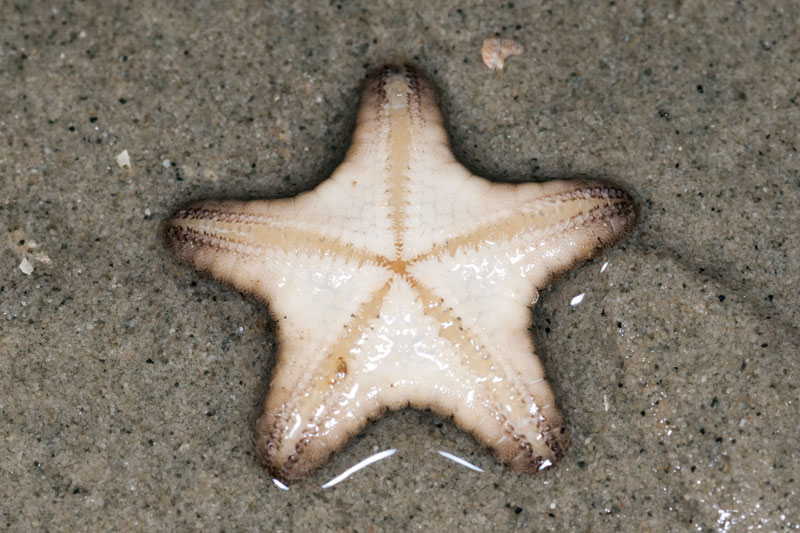 |
| Tiny biscuit sea star (underside) |
 |
| Orange sea star (Biscuit? Cake? sea star) |
The
little ruby flatworm (
Phrikoceros baibaiye) is very common on Chek Jawa. In bright orange colour, this flatworm is often encountered in pairs and they are fast moving animals when disturbed. When out of water among coral rubble, it is easily mistaken as some
slime ascidian. Interestingly, this flatworm feeds on ascidians too.
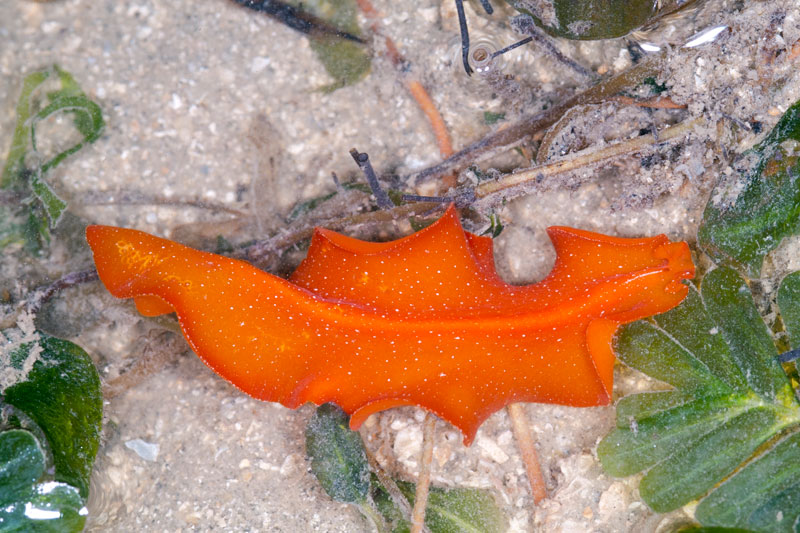 |
| Little ruby flatworm. |
Other flatworm seen are the
fine-lined flatworm and the
brown striped flatworm (
Pseudobiceros gratus)
 |
| Fine-lined flatworm |
 |
| Brown striped flatworm |
Chay Hoon had an amazing find on this trip. She found a
paper bubble shell snail (
Hydatina sp.). The bubble shell snail is actually a sea slug carrying a shell. It has a body much larger than the shell and hence is unable to retract into the shell.
 |
| Paper bubble shell snail (overview) |
 |
| Paper bubble shell snail (front) |
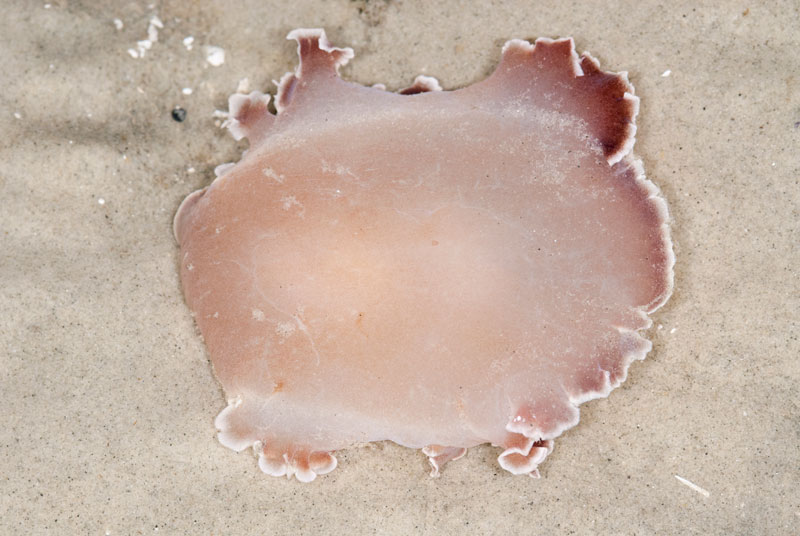 |
| Paper bubble shell snail (underside) |
Chay Hoon even managed to discover these nudibranchs blending very well with their sponge host. She says that this might be a new record. It looks exactly like a sponge.
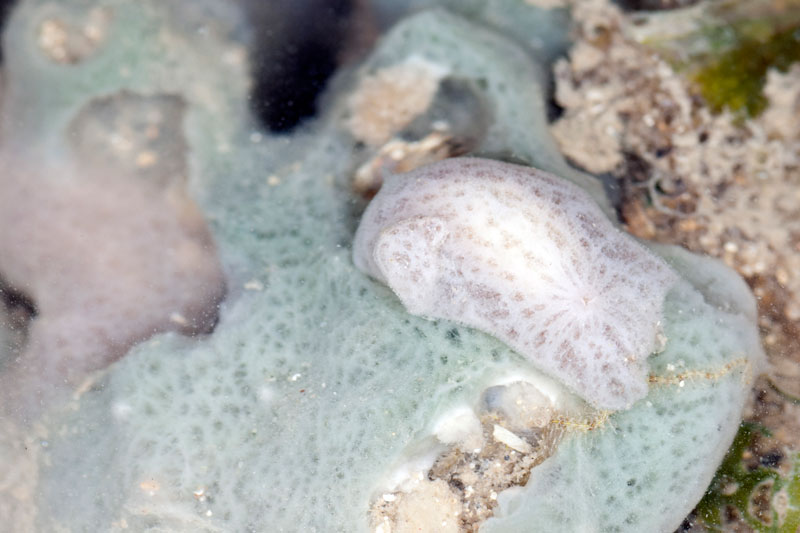 |
| Unknown nudibranch (white) |
 |
There are two of the unknown nudibranch.
Can you find where the second nudibranch is located? |
There were other amazing large sea slugs encountered today such as the
denison's nudibranch (
Dendrodoris denisoni),
fugly nudibranch (
Actinocyclus papillatus),
sponge nudibranch (
Atagema spongiosa),
Gymnodoris nudibranch (
Gymnodoris sp.) and
ornate leaf slug (
Elysia ornata). Chay Hoon has more photos of other sea slugs on her Facebook album.
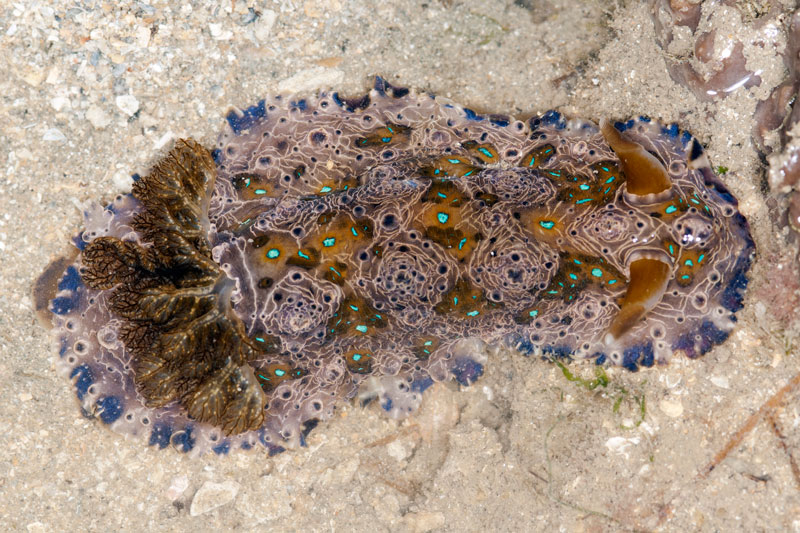 |
| Denison's nudibranch (overview) |
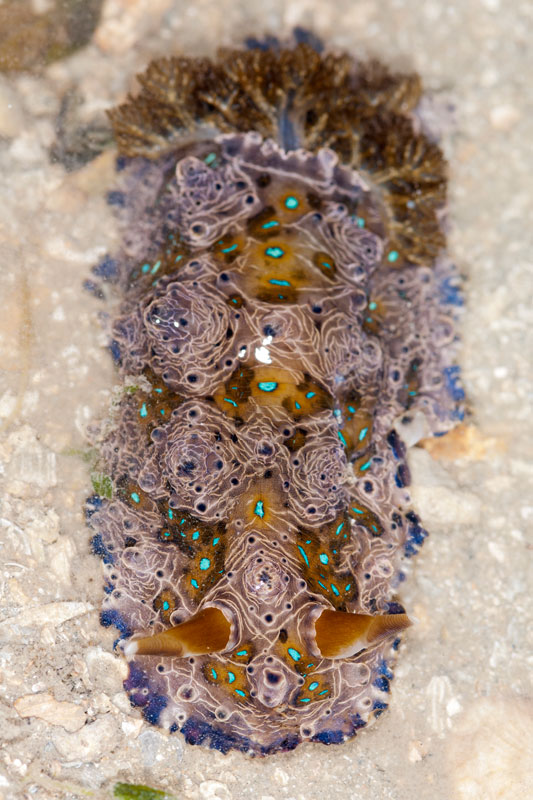 |
| Denison's nudibranch (rhinophores) |
 |
| Denison's nudibranch (feathery gills) |
 |
| Denison's nudibranch (underside) |
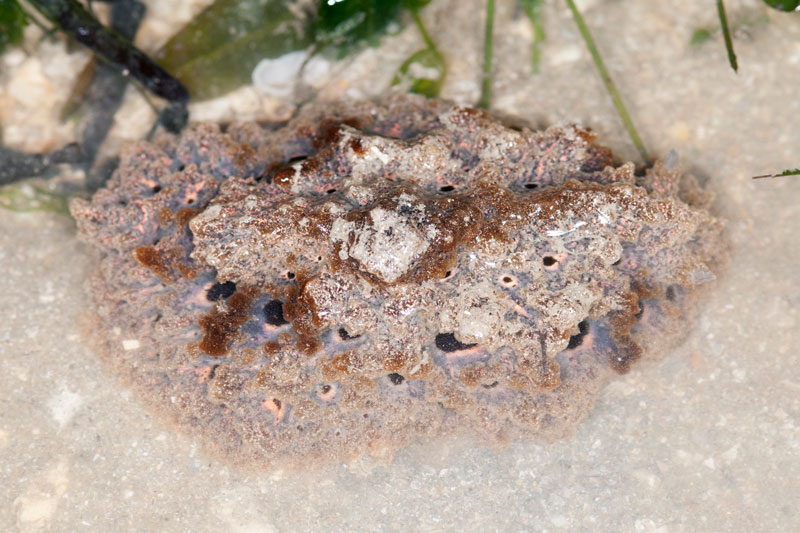 |
| Sponge nudibranch (overview) |
 |
| Sponge nudibranch (can you see the rhinophores?) |
 |
| Sponge nudibranch (underside) |
 |
| Fugly nudibranch (overview) |
 |
| Fugly nudibranch (feathery gills) |
 |
| Fugly nudibranch (spot the rhinophores) |
 |
| Fugly nudibranch (underside) |
 |
| Ornate leaf slug |
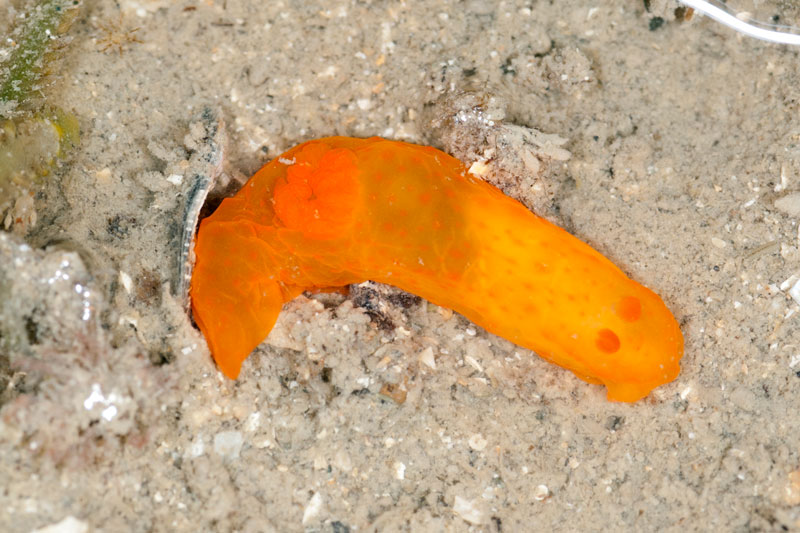 |
| Gymnodoris nudibranch |
Stepping the shallow waters at Chek Jawa, we need to be very careful as the water can get quite murky, making impossible for us to see what animals rest on the substrate. For example, I came across a juvenile
blue-spotted fantail ray (
Taeniura lymma) in a rather clear shallow pool. Keeping a safe distance from the ray, I had a short look at this resting animal.
 |
| Blue-spotted fantail ray |
Towards the end of the trip, I left the rest and diverted my attention to the sandbar next to the pontoon. I wanted to shoot the
sand bubbler crabs (Scopimera sp.) and
soldier crabs (
Dotilla sp.). The crabs were very sensitive tonight, probably because the night is still young. It was difficult finding crabs that could stay still for long time, but I managed to get a few shots before the trip ended.
 |
| Sand bubbler crab |
 |
| Solider crab |
I think my next crab challenge would be the fiddler crabs.
On the rather sad note, the
smooth ribbon seagrass (
Cymodocea rotundata) seemed to look strange. Many of them were blackish and there were patches of them with pale-yellowish leaf blades near the base. I am not sure what is going on.
 |
| Smooth ribbon seagrass |
The small team was very much blessed with cooling and rain-free weather while the southern island got swept by a massive storm with lightning flashing across the sky in the early night. We were worried that we might be trapped at Chek Jawa. Luckily, the clouds never reached Changi.
Unfortunately, the intertidal area is not opened for public access. However, the boardwalk is opened daily from 8 am to 6 pm.
This survey trip is made possible with support, permission and permit by National Parks Board (NParks).
Posts by others:
Chay Hoon -
Photos on Facebook
Kok Sheng -
Photos on Facebook
Mei Lin -
Chek Jawa Survey (04012014)






































No comments:
Post a Comment